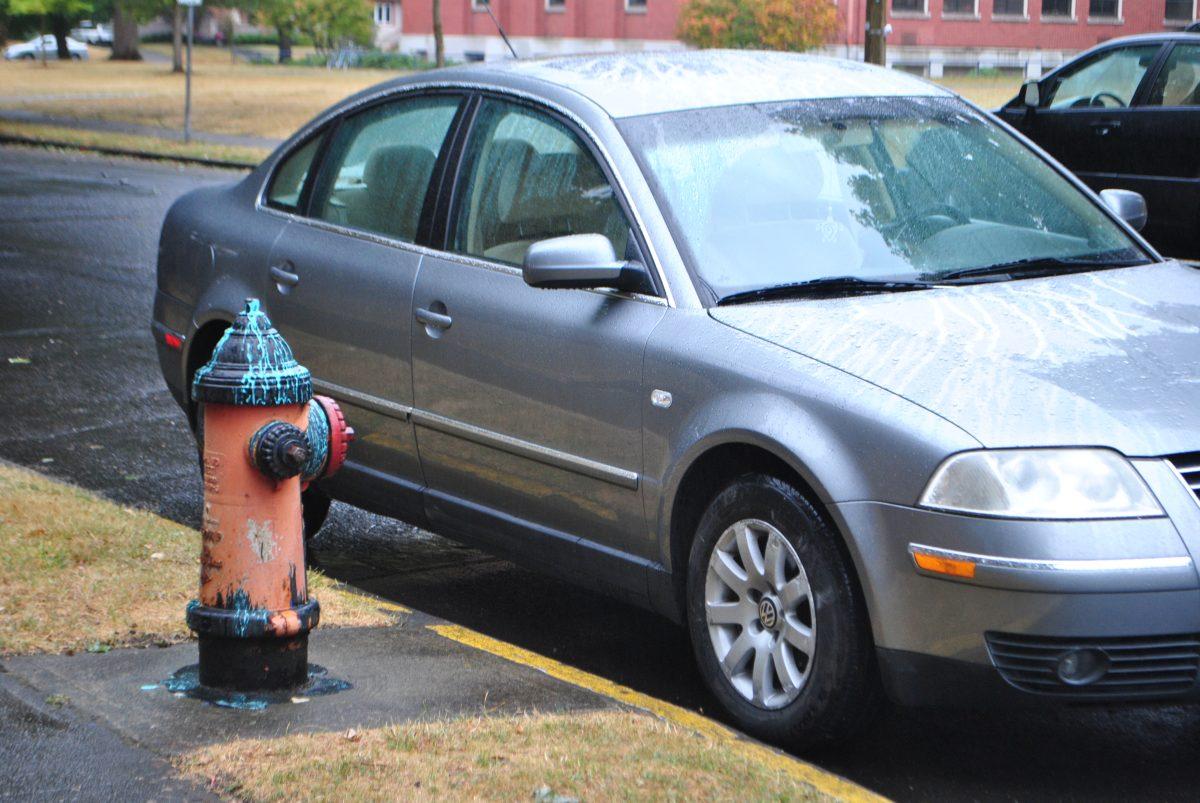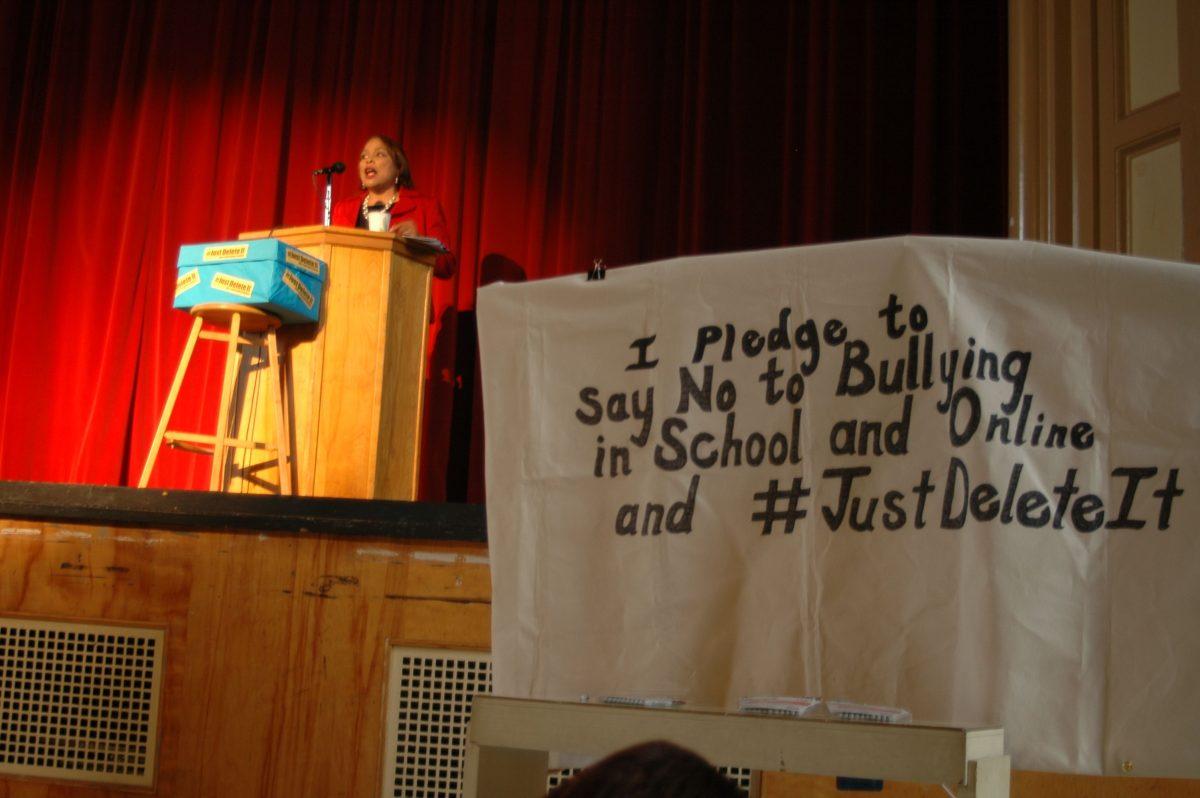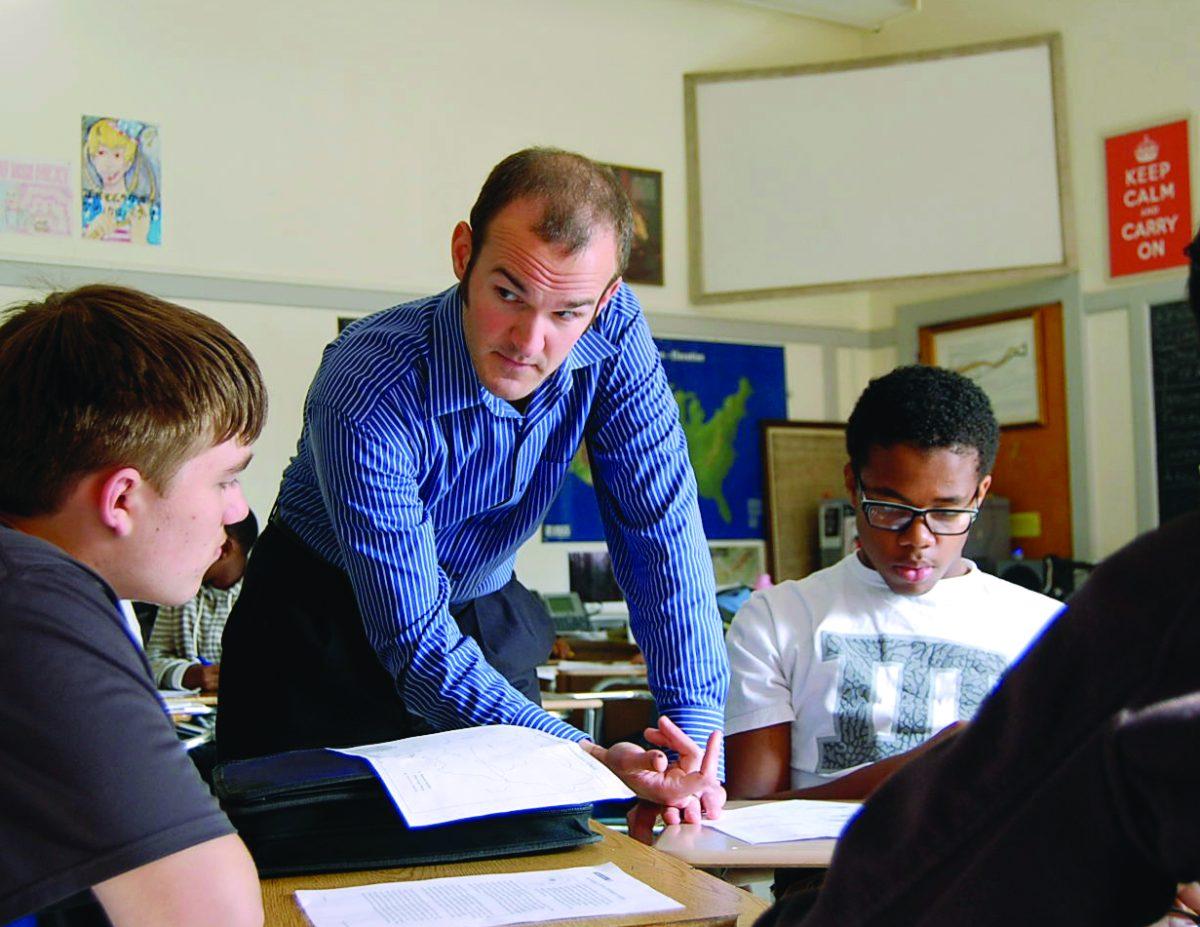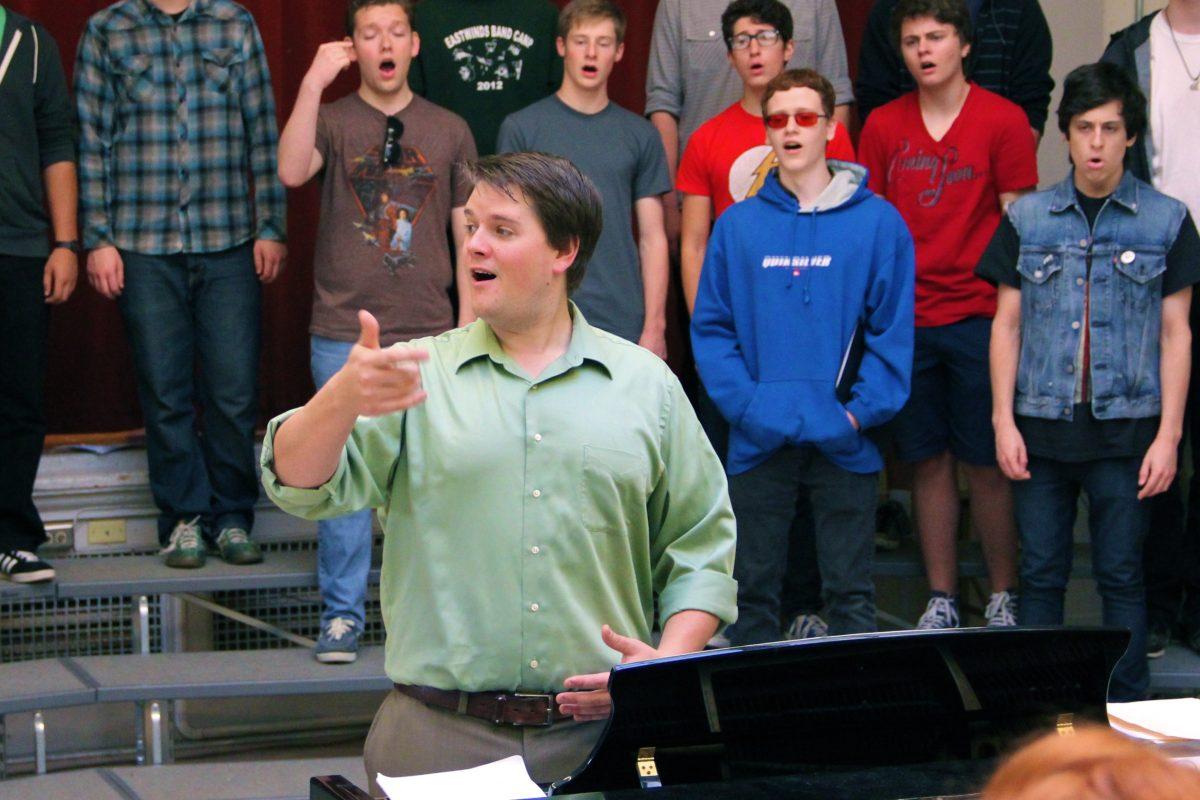Last month, Grant High School senior Paige Moreland was driving along Northeast Broadway when a large Sport Utility Vehicle crashed into the passenger side of her car. Her airbag deployed, her entire body jerked around from the impact and she blacked out. Moreland, 17, who has been driving for 19 months, ended up in the emergency room with minor injuries.
After an accident involving a man in a large Chevrolet pickup truck, senior Michael Healey,17, wasn’t able to put the damage on his insurance because the rates would shoot through the roof, due to previous accidents by his family members on the same plan. “I’m still paying it off,” he says. “It was $1,800 worth of damage.”
Senior Milan Woods, 17, recently got hurt in an accident while riding in a friend’s car. The driver maneuvered around a garbage truck, but was sideswiped, causing $3,000 worth of damage to her car. Woods, a basketball player on the Grant girl’s team, hurt her back and neck, and she has to undergo physical therapy to be able to play this season.
It’s no secret. Teens and cars can be a dangerous mix. Take a look out front of Grant and you’ll see what amounts on some days to mayhem. Many students speed around the neighborhood. Some drive with one hand and while diligently checking their phones with the other for the latest text message. Others adjust the music blaring out of their speakers, paying more attention to the beat than how they are watching the road.
These scenes play out every day in the Grant community. And other high schools face the same issue. According to the Oregon Driver and Motors Vehicle Division, there are 8,000 teen drivers age 14-17 on the road in Multnomah County. Nationally, some experts say roughly 75 percent of teens admit to texting and driving.
“We didn’t have our own cars when I was in high school. We drove our parents’ cars,” says Sue Davis, vice principal’s secretary. “These days, kids have a lot of energy and many don’t have any experience. Kids take risks that experienced drivers wouldn’t consider.”
What’s certain is that risky driving kills. Last year, Grant alumnus Randy Walraven was killed in a car accident while in the passenger seat driving down Lombard. While in the right lane, a semi-truck in the left lane kept the driver from seeing a car pulling out of a driveway and they collided. The driver lived, suffering from a broken neck, but Walraven wasn’t so fortunate.
 Randy Walraven’s brother, Steven, is a senior at Grant this year, and he says he hasn’t thought about driving the same way since. “Teens need to be smart behind the wheel,” he says. “Never speed. Always know your surroundings. You can control your driving, but you can’t control the others on the road.”
Randy Walraven’s brother, Steven, is a senior at Grant this year, and he says he hasn’t thought about driving the same way since. “Teens need to be smart behind the wheel,” he says. “Never speed. Always know your surroundings. You can control your driving, but you can’t control the others on the road.”
Many young drivers feel like they have it all when they first get their license. Freedom, a sense of independence, and access to a car can give drivers a false sense of power and immunity from consequences. Many drivers, law enforcement officials say, don’t always follow the rules that come along with the responsibility of being on the road. And with the distractions of friends, cell phones and a dose of ego, the danger is there for inexperienced drivers. Rules, police say, are made for a reason.
Oregon law is clear when it comes to teen drivers:
• No driving for six months with another passenger in the car who is under the age of 20 who is not in your immediate family.
• No driving with a cell phone, regardless of if it is hands free or on Bluetooth.
• No driving between midnight and 5 a.m.
While the rules are clear, students freely violate them. Grant Magazine conducted a survey of 60 students and found that 70 percent break the “six-month rule.”
Moreland says that you should definitely obey driving laws because “they are made for a reason.”
Portland Police Bureau Officer Brian Hunveker deals with traffic violations and driving related problems for the traffic division. He says distracted teen drivers cause the most accidents when they are on their phones. Hunveker says that student drivers need to remember that getting their license affects more than just them. “They need to think about everyone else, the other drivers on the road, bikers, other people in the car, not just about their music,” he says.
Andrew Crites, an instructor for Oregon Driver Education Center, agrees and adds that having friends in the car is just as distracting.
Most teens believe that they are skilled enough drivers to handle the road and their phone or iPod at the same time. “My students tell me that they are capable of texting and driving,” English teacher Dylan Leeman says. “But the pre-frontal cortex,” the part of your brain which contemplates decisions and risk factor, “is still developing for teenagers. They don’t realize how dangerous it is.”
It’s not just the moving cars that create issues around Grant. Neighbors near the school have noticed the effect of student drivers on the streets throughout the school year. Streets packed with cars, many poorly parked, often keep neighbors from getting out of their driveways.
One neighbor, who asked to remain anonymous, says: “If people are illegally parked, I have the option to have people come ticket them.” And that happens pretty often.
Campus monitor Vonnie Core has to deal with driving related issues weekly. “It scares you as an adult to sit back and watch it,” Core says.
She watches student drivers speed around the school during lunch hour, while other students on foot aren’t using sidewalks. “It’s a huge safety issue,” she says. Core has realized that students with new licenses are often just trying to impress their peers, and they need to respect the privilege of driving.
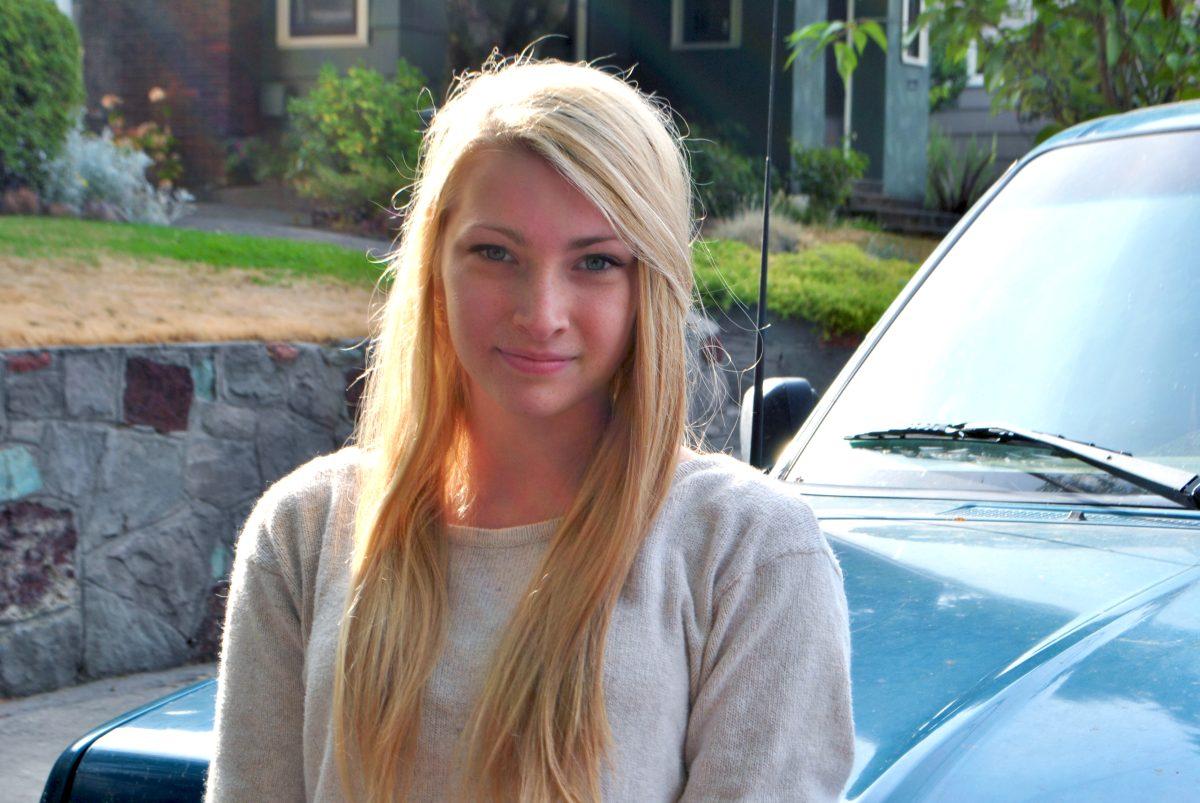 Senior Lucinda Klicker has been in three serious accidents, two while driving and one while being driven by a friend, due to not paying attention on the road, one resulting in a totaled vehicle.
Senior Lucinda Klicker has been in three serious accidents, two while driving and one while being driven by a friend, due to not paying attention on the road, one resulting in a totaled vehicle.
The first accident occurred on a rainy day on the freeway when Klicker did not realize that the cars in front of her were stopped, and she slammed on the brakes, the car behind her “slid into her” car.
The second wreck was when she was trying to speed through a yellow light. The third was when a friend was driving three of them to the Oregon Country Fair, blasting the song “Some Nights.” She didn’t notice that the traffic in front of her was slowing to a stop when she slammed on her brakes. They hit the car in front of them, causing $1,700 worth of damage.
Klicker says she’s learned from all the irresponsible driving that it’s beneficial to drive safely and not take advantage of the freedom of driving a car. “Teens tend to space out and we aren’t alert enough,” Klicker says. “With our technology use, our minds jump from thing to thing and teens don’t take driving seriously.”



























